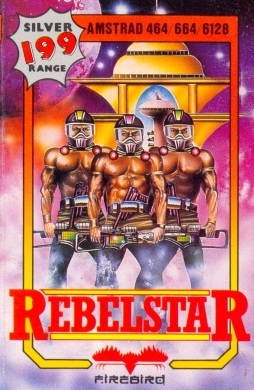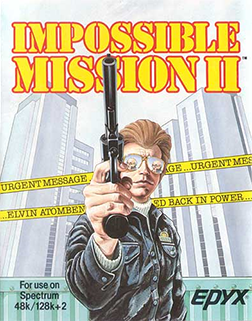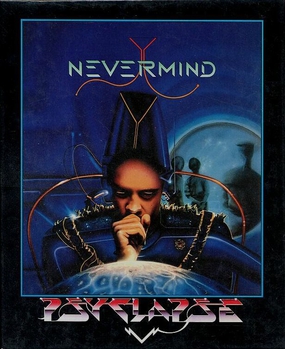
Backgammon is a two-player board game played with counters and dice on tables boards. It is the most widespread Western member of the large family of tables games, whose ancestors date back nearly 5,000 years to the regions of Mesopotamia and Persia. The earliest record of backgammon itself dates to 17th-century England, being descended from the 16th-century game of Irish.

Craps is a dice game in which players bet on the outcomes of the roll of a pair of dice. Players can wager money against each other or against a bank. Because it requires little equipment, "street craps" can be played in informal settings. While shooting craps, players may use slang terminology to place bets and actions.

Go is an abstract strategy board game for two players in which the aim is to surround more territory than the opponent. The game was invented in China more than 2,500 years ago and is believed to be the oldest board game continuously played to the present day. A 2016 survey by the International Go Federation's 75 member nations found that there are over 46 million people worldwide who know how to play Go, and over 20 million current players, the majority of whom live in East Asia.
id Tech 1, also known as the Doom engine, is the game engine used in the id Software video games Doom and Doom II: Hell on Earth. It is also used in Heretic, Hexen: Beyond Heretic, Strife: Quest for the Sigil, Hacx: Twitch 'n Kill, Freedoom, and other games produced by licensees. It was created by John Carmack, with auxiliary functions written by Mike Abrash, John Romero, Dave Taylor, and Paul Radek. Originally developed on NeXT computers, it was ported to MS-DOS and compatible operating systems for Doom's initial release and was later ported to several game consoles and operating systems.

Jetpac is a shooter video game developed and published by Ultimate Play the Game and released for the ZX Spectrum and VIC-20 in 1983 and the BBC Micro in 1984. It is the first game to be released by Ultimate Play the Game, the company which later became Rare. The game follows Jetman as he must rebuild his rocket in order to explore different planets, while simultaneously defending against hostile aliens. It was written by Ultimate co-founder Chris Stamper with graphics designed by his brother, Tim Stamper. Reviewers praised Jetpac's presentation and gameplay, and it won "Game of the Year" at the Golden Joystick Awards in 1983.
In tabletop games and video games, game mechanics are the rules or ludemes that govern and guide the player's actions, as well as the game's response to them. A rule is an instruction on how to play, a ludeme is an element of play like the L-shaped move of the knight in chess. A game's mechanics thus effectively specify how the game will work for the people who play it.

Space Crusade is an adventure board game produced by Milton Bradley together with Games Workshop and was first made in 1990. It was produced in the UK and available in some other countries including Finland, Ireland, France, Spain, Denmark, Australia, Hellas and New Zealand. In Germany, Italy, Belgium and the Netherlands, it is known as Star Quest.

Chuckie Egg is a video game released by A&F Software in 1983 initially for the ZX Spectrum, BBC Micro, and Dragon 32/64. It was ported to the Commodore 64, Acorn Electron, MSX, Tatung Einstein, Amstrad CPC, and Atari 8-bit family. It was later updated for the Amiga, Atari ST, and IBM PC compatibles.

The Rebelstar games are a series of turn-based tactics video games designed by Julian Gollop. Rebelstar Raiders was published in 1984 by Red Shift for the ZX Spectrum. It was reworked in machine code as Rebelstar, published by Firebird in 1986. A sequel, Rebelstar II, was published in 1988 by Silverbird. Rebelstar, but not its sequel, was also adapted for the Amstrad CPC home computer.
Dice chess can refer to a number of chess variants in which dice are used to alter gameplay; specifically that the moves available to each player are determined by rolling a pair of ordinary six-sided dice. There are many different variations of this form of dice chess. One of them is described here.

Impossible Mission II is a video game developed by Novotrade and published by Epyx in 1988. It was released for the Commodore 64, ZX Spectrum, Amstrad CPC, Enterprise 128, Nintendo Entertainment System, DOS, Atari ST, Apple II with at least 128K, Apple IIGS, and Amiga.

Tornado Low Level is a multidirectional flight game developed by Costa Panayi and published in 1984 by the company he co-founded, Vortex Software. The game was released for the ZX Spectrum in 1984, with ports for the Amstrad CPC and Commodore 64 in 1985.

Cyclone is a multidirectional helicopter game for the ZX Spectrum released by Vortex Software in 1985. It was written by Vortex co-founder Costa Panayi who also coded the similarly styled Tornado Low Level.

Loco-Motion, known as Guttang Gottong in Japan, is an arcade puzzle game developed by Konami in 1982 and released by Sega in Japan. The North American rights were licensed to Centuri. In Loco-Motion, the player builds a path for their unstoppable locomotive by moving tracks which will allow it to pick up passengers.

Britannia is a strategy board game, first released and published in 1986 by Gibsons Games in the United Kingdom, and The Avalon Hill Game Company in 1987 in the United States, and most recently updated in late 2008 as a re-release of the 2005 edition, produced by Fantasy Flight Games. It broadly depicts the wars in, and migrations to, the island of Great Britain in the centuries from the Roman invasions to the Norman Conquest.

Never Mind is a puzzle video game developed by MC Lothlorien and published by Psygnosis under its Psyclapse label in 1989.

Captain America in: The Doom Tube of Dr. Megalomann, also known as Captain America Defies The Doom Tube, is a video game based on a comic book series of the same name. It was published in 1987 by U.S. Gold on their Go! label for computers including the Amstrad CPC and the Commodore 64 and was published a year later on the ZX Spectrum. Reviews were mixed, with the graphics and audio generally seen as poor. It is the first video game to feature Captain America.

Beagle Bag is a collection of video games for the Apple II family of computers published in 1982 by Beagle Bros Software. In common with their other titles, the Beagle Bag software was released in unlocked and unprotected form, and is now in the public domain.
Solving chess consists of finding an optimal strategy for the game of chess; that is, one by which one of the players can always force a victory, or either can force a draw. It is also related to more generally solving chess-like games such as Capablanca chess and infinite chess. In a weaker sense, solving chess may refer to proving which one of the three possible outcomes is the result of two perfect players, without necessarily revealing the optimal strategy itself.

Bristles is a video game by Fernando Herrera for the Atari 8-bit family and published by the company he co-founded, First Star Software, in 1983. It was ported to the Commodore 64, ZX Spectrum, and Exidy's Max-A-Flex arcade system. As Peter the Painter, the player uses ladders and elevators move through a cutaway view of a house to paint all the walls.
















